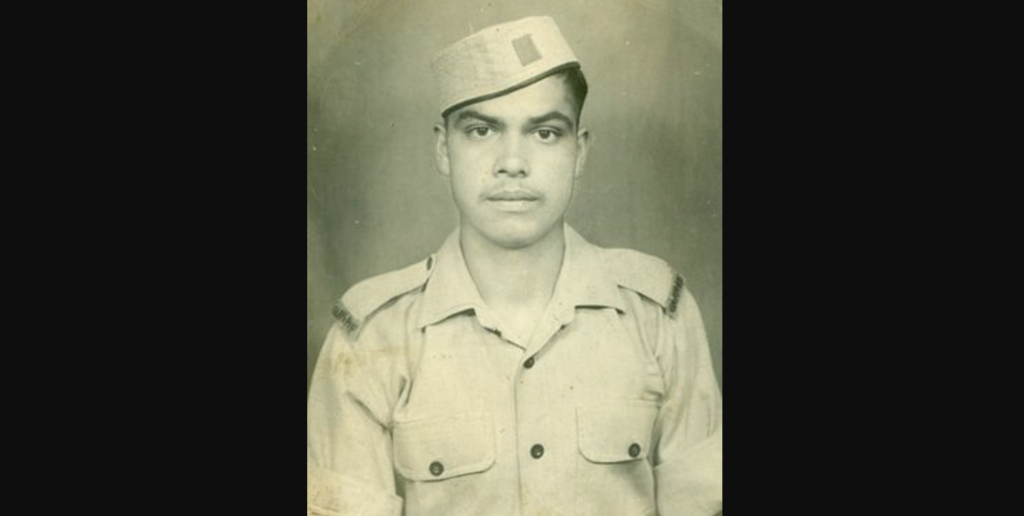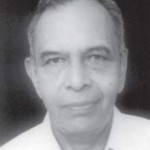Gabar Singh was born on 21 April 1895 in village Manjood near Chamba, Tehri Garhwal district in the hill state of Uttarakhand.
Singh enlisted in the 2/39 Garhwal Rifles in October 1913. The unit proceeded to France as part of the Indian Expeditionary Force in World War I. It was part of the 7th Meerut Division and was in the front lines during the first battle of Ypres and later in the Pas-de-Calais sector. It remained there till the end of the year. It was selected to force a gap in the lines at Neuve Chapelle which was held strongly by the German Forces and repeated attempts to push the Germans back had failed.
The 7th Division was tasked to force a gap for the Cavalry to exploit and rush to Aubers Ridge and possibly Lille. The French planned to attack the Vimy Ridge on the Artois plateau from the south to threaten their communications. The French attack failed and their role was reduced to provide fire support only. If the French attack had succeeded, a further advance of fifteen kilometres would have given them control of the communication centre used by the German Army to supply their troops in the Noyon region. The Royal Flying Corps carried out reconnaissance up to a depth of 1400 metres inspite of bad weather and 1500 copies of the maps were distributed to the troops. The British Army had launched the attack with great preparation to gain initial success. Unexpected delays and communication failure led to setback. The Germans were able to restore the situation by a counter-attack with twenty battalions.
The 7th Division was tasked to resume the advance and it launched the attack on 10 March 1915. Indian soldiers made half of the attacking force and it was the first action in which the Indian soldiers fought as a whole. This was also the first set piece battle and showed the form which positional warfare took during the rest of the war. The attack was preceded by an artillery barrage. The barrage was not effective in dislodging the Germans. The trenches had to be cleared by parties armed with bombs and bayonets. Despite heavy casualties they managed to take a key position. The commander of Gabar Singh’s party was killed and Singh led the bayonet party. With disregard to risk to his life, he entered their main trench and drove the enemy back forcing them to surrender. Singh was killed during this battle. He was posthumously awarded Victoria Cross (VC), the highest and most prestigious award for most conspicuous gallantry in the face of the enemy in the British army.
Singh’s body could not be traced and has no known grave. His name is recorded on the memorial at Neuve Chancelle and on the Memorial Gates in London opened in 2002. On the outskirts of Neuve Chapelle, there is another Indian War memorial in honour of the Army of India which fought in France and Belgium between 1914-1918, and in perpetual remembrance of those who laid down their life. Negi’s name is mentioned there. More than 4700 Indian soldiers and labourers lost their lives in the War.
The India Office sent the medal and a letter of condolence from the Queen to Negi’s wife, Sattori Devi .She wore it with great pride on her sari till her death in 1981. The medal was acquired by his regiment and a replica sent to the family.
Since 1925, every year in April, the descendents of Gabar Singh organise a fair in his honour at Chamba. Stalls, bands and a recruitment rally by the Garhwal Regiment are a regular feature at this unique fair. Many youth aspiring to join the army attend the fair and participate in the recruitment rally. Many tents are put up in the area during the festival for those attending the fair from neighbouring districts. The Garhwal Regiment has adopted it for participation since 1971 to give it a much needed support and has built a memorial to Rifleman Gabar Singh Negi in Chamba. With the inclusion of army traditions in the ceremonies, the fair has started attracting villagers from far and near who honour this brave soldier.


 [/column]
[/column]